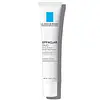What's inside
What's inside
 Key Ingredients
Key Ingredients

 Benefits
Benefits

 Concerns
Concerns

 Ingredients Side-by-side
Ingredients Side-by-side

Benzoyl Peroxide 5.5%
Water
Skin ConditioningIsostearyl Alcohol
EmollientGlycerin
HumectantPentylene Glycol
Skin ConditioningSilica
AbrasiveCarbomer
Emulsion StabilisingCapryloyl Salicylic Acid
ExfoliatingPotassium Hydroxide
BufferingTocopheryl Acetate
AntioxidantAcrylates/C10-30 Alkyl Acrylate Crosspolymer
Emulsion StabilisingDisodium EDTA
Epilobium Angustifolium Flower/Leaf/Stem Extract
Skin ConditioningGlycerin
HumectantPropylene Glycol
HumectantPolyglyceryl-6 Distearate
EmulsifyingPEG-8 Laurate
EmulsifyingCamellia Sinensis Leaf Extract
AntimicrobialPinus Pinaster Bark Extract
AntioxidantMelaleuca Alternifolia Leaf Extract
PerfumingVitis Vinifera Seed Extract
AntimicrobialCarbomer
Emulsion StabilisingMelaleuca Alternifolia Leaf Oil
AntioxidantPhenoxyethanol
PreservativeEthylhexylglycerin
Skin ConditioningDisodium EDTA
Sodium Hydroxide
BufferingGlycerin, Propylene Glycol, Polyglyceryl-6 Distearate, PEG-8 Laurate, Camellia Sinensis Leaf Extract, Pinus Pinaster Bark Extract, Melaleuca Alternifolia Leaf Extract, Vitis Vinifera Seed Extract, Carbomer, Melaleuca Alternifolia Leaf Oil, Phenoxyethanol, Ethylhexylglycerin, Disodium EDTA, Sodium Hydroxide
 Reviews
Reviews

Ingredients Explained
These ingredients are found in both products.
Ingredients higher up in an ingredient list are typically present in a larger amount.
Carbomer is a polymer of acrylic acid. Its main role is to create a gel consistency.
A high amount of carbomer can cause pilling or balling up of products. Don't worry, most products contain 1% or less of carbomer.
Disodium EDTA plays a role in making products more stable by aiding other preservatives.
It is a chelating agent, meaning it neutralizes metal ions that may be found in a product.
Disodium EDTA is a salt of edetic acid and is found to be safe in cosmetic ingredients.
Learn more about Disodium EDTAGlycerin is already naturally found in your skin. It helps moisturize and protect your skin.
A study from 2016 found glycerin to be more effective as a humectant than AHAs and hyaluronic acid.
As a humectant, it helps the skin stay hydrated by pulling moisture to your skin. The low molecular weight of glycerin allows it to pull moisture into the deeper layers of your skin.
Hydrated skin improves your skin barrier; Your skin barrier helps protect against irritants and bacteria.
Glycerin has also been found to have antimicrobial and antiviral properties. Due to these properties, glycerin is often used in wound and burn treatments.
In cosmetics, glycerin is usually derived from plants such as soybean or palm. However, it can also be sourced from animals, such as tallow or animal fat.
This ingredient is organic, colorless, odorless, and non-toxic.
Glycerin is the name for this ingredient in American English. British English uses Glycerol/Glycerine.
Learn more about Glycerin